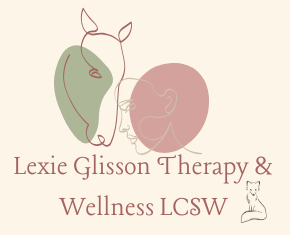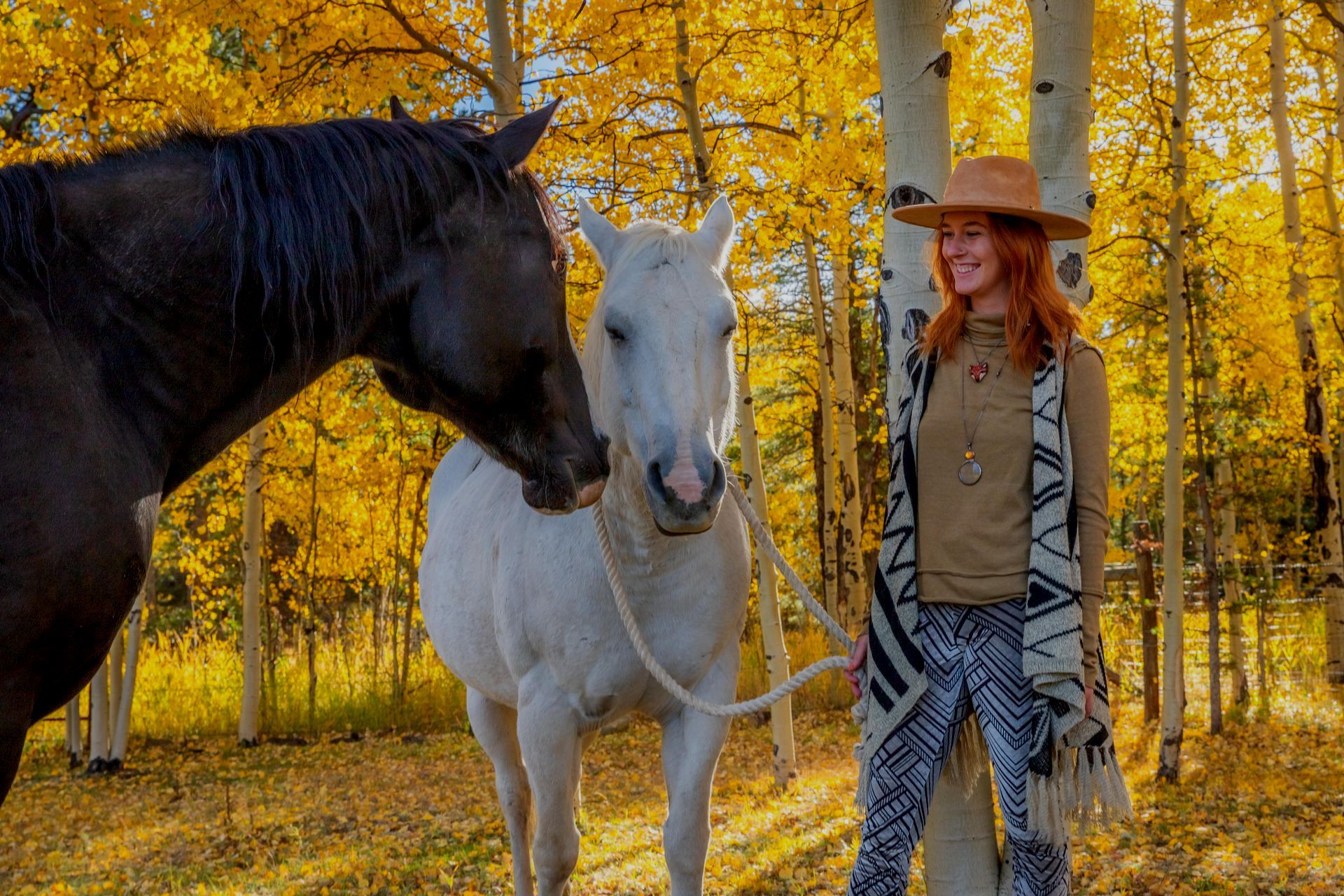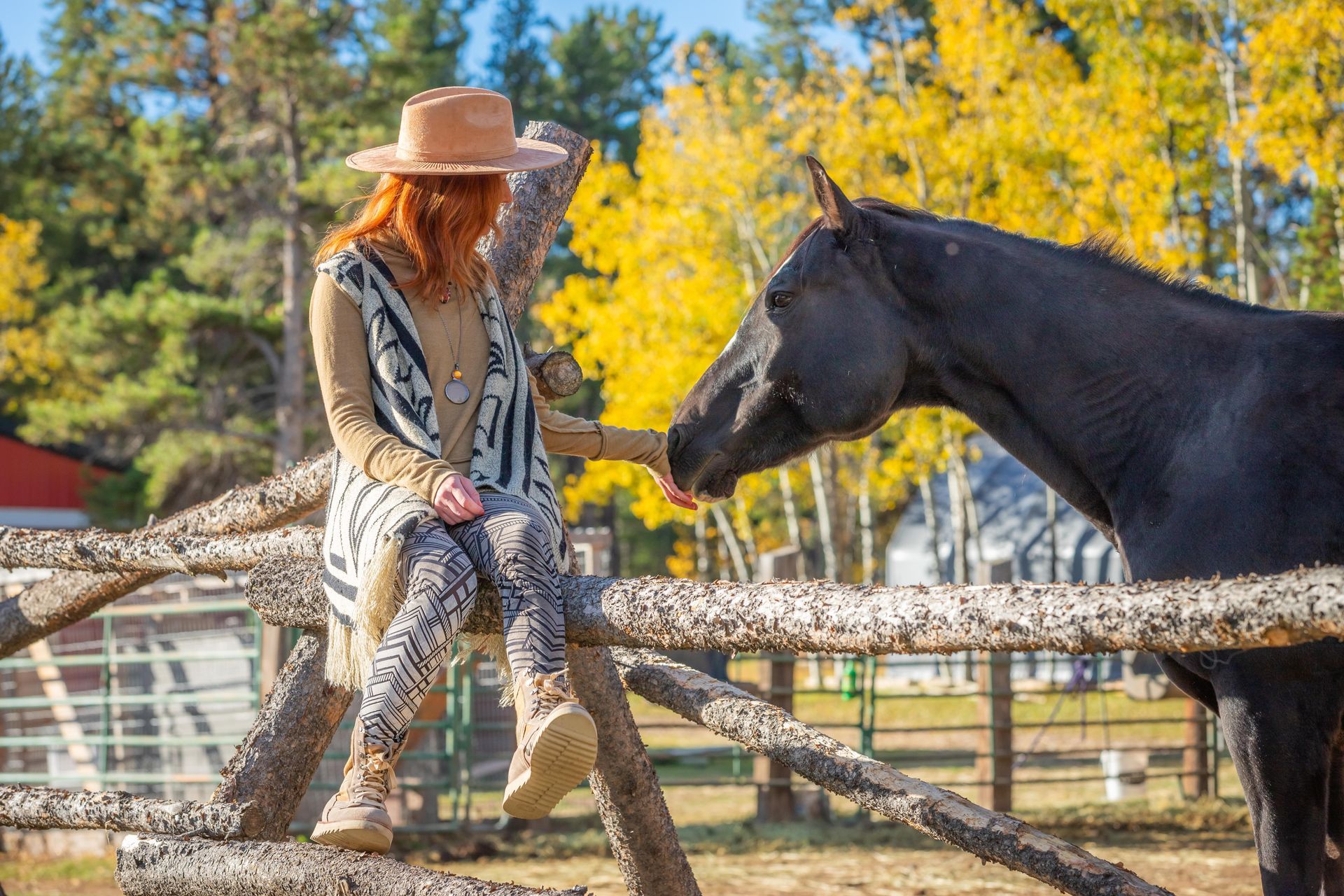Therapy comes in many forms, each tailored to the diverse needs of individuals seeking support. Among the various approaches, equine-assisted therapy has emerged as a unique and powerful alternative to traditional talk therapy. But what sets it apart? In this guide, we’ll explore the key differences and benefits of both modalities to help you understand how equine-assisted therapy might complement or even enhance the therapeutic journey.
Why Choose Equine-Assisted Therapy?
Equine-assisted therapy involves working with horses to promote emotional, mental, and relational growth. Unlike traditional therapy, which typically takes place in an office setting, equine therapy is experiential and conducted outdoors in partnership with these sensitive, intuitive animals.
What are some of the Unique Aspects of Therapy with Horses?
- Horses as Mirrors: Horses are highly attuned to human emotions and energy. They can sense subtle shifts in your mood and body language, reflecting those changes back to you in real-time. This unique mirroring ability helps clients develop greater self-awareness and emotional insight.
- A Non-Judgmental Presence: Equine-assisted therapy offers a unique therapeutic environment as horses do not judge or hold biases. Their instinctual responses create a safe space where clients can freely explore their feelings and behaviors without fear of criticism. Importantly, no prior experience with horses is necessary to participate in equine-assisted therapy, making it accessible to everyone regardless of their background with horses.
- Hands-On, Experiential Learning: Equine therapy involves activities like grooming, leading, or guiding horses through obstacle courses. These hands-on experiences engage the body and mind, offering a different way to process emotions compared to traditional talk therapy.
- Connection to Nature: Being outdoors adds another layer of therapeutic benefit. Studies show that spending time in natural environments reduces stress, enhances mood, and fosters a sense of well-being.
How is Traditional Therapy Different From Equine-Assisted Therapy?
Traditional therapy, often conducted in an office or virtual setting, typically involves talking with a licensed therapist about your thoughts, emotions, and experiences. It’s an excellent choice for individuals seeking a structured approach to understanding and addressing mental health challenges.
How Do Horses Help in the Therapeutic Process?
- Intuitive Nature: Horses are prey animals, which means they’re constantly attuned to their environment. This heightened sensitivity allows them to pick up on human emotions and respond in ways that foster connection and understanding.
- Non-Verbal Communication: Horses rely on body language to communicate, encouraging clients to become more aware of their own non-verbal cues and how those cues impact relationships.
- Grounding Presence: The size, strength, and calm demeanor of a horse can create a grounding effect, helping clients feel more present and centered.
How Does Nature Play a Role in Equine-Assisted Therapy?
Equine-assisted therapy takes place in outdoor settings, which offers benefits beyond working with horses. Exposure to nature has been shown to:
- Lower cortisol levels (a stress hormone)
- Enhance mood and reduce symptoms of anxiety and depression
- Improve focus and cognitive function
- Foster a sense of connection and belonging
This combination of nature’s healing qualities and the horse-human bond makes equine-assisted therapy a holistic approach to well-being.
Which Therapy is Right for You?
Choosing between equine-assisted therapy and traditional therapy depends on your preferences, needs, and goals. If you enjoy experiential learning, being outdoors, or seek a unique connection with your emotions, equine-assisted therapy could be ideal. Conversely, if you prefer a more structured, evidence-based approach focused on verbal processing, traditional therapy may be better suited for you.
In my practice, I offer both traditional and equine-assisted therapy, combining techniques like
EMDR and
Gestalt Therapy with equine interactions to create personalized, effective healing experiences. Many clients find that integrating these modalities enriches their therapy, providing a well-rounded approach that incorporates both experiential and verbal elements. These therapies can be used together, allowing clients to leverage their strengths and deepen their healing journey.









